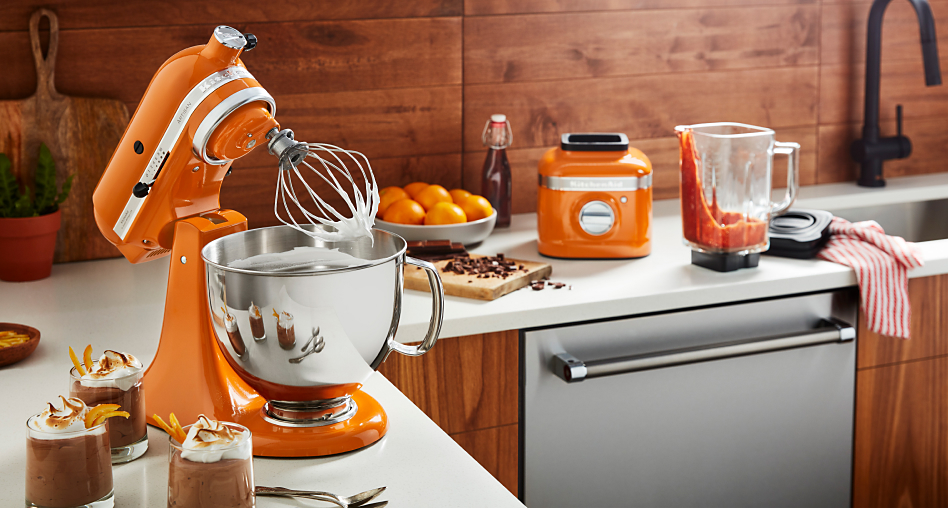Top Ten Gadgets for Cooking: Pros and Cons
In today’s fast-paced world, cooking has evolved from a necessary chore to an enjoyable hobby, often made easier and more fun with the help of modern kitchen gadgets. Whether you’re a professional chef or a home cook, the right tools can significantly enhance your culinary experience. With countless gadgets on the market, it can be challenging to choose the ones that are truly worth the investment. In this article, we explore the top ten gadgets for cooking, highlighting their pros and cons to help you make informed decisions.
1. Instant Pot
The Instant Pot has revolutionized home cooking with its ability to function as a pressure cooker, slow cooker, rice cooker, steamer, sauté pan, and even a yogurt maker. Its versatility and ease of use make it a must-have for busy individuals.
Pros:
- Versatile: Combines multiple kitchen appliances into one, saving space and money.
- Time-Saving: Significantly reduces cooking time compared to traditional methods.
- Consistent Results: Delivers reliable results, particularly for dishes that require precise cooking times.
Cons:
- Learning Curve: Can be intimidating for first-time users due to its many functions and settings.
- Size: It can be bulky, taking up considerable counter space.
- Expensive: Higher initial cost compared to individual appliances.
2. Air Fryer
Air fryers have gained immense popularity due to their ability to fry foods with little to no oil, offering a healthier alternative to traditional frying methods. They use hot air circulation to cook food evenly and create a crispy texture.
Pros:
- Healthier Cooking: Reduces the need for oil, making fried foods less greasy and calorie-laden.
- Versatile: Can be used to cook a variety of foods, including vegetables, meats, and even baked goods.
- Quick Cooking: Preheats quickly and cooks food faster than a conventional oven.
Cons:
- Limited Capacity: Most models have a small cooking basket, which may not be suitable for large families.
- Mixed Results: Some foods may not achieve the same crispiness as traditional frying.
- Noise: Can be quite loud during operation.
3. Sous Vide Precision Cooker
Sous vide cooking involves vacuum-sealing food and cooking it in a water bath at a precise temperature. This method is popular among chefs for its ability to cook food evenly and retain moisture.
Pros:
- Precise Cooking: Ensures even cooking and precise temperature control, reducing the risk of overcooking.
- Enhanced Flavor: Retains moisture and flavor, especially in meats and fish.
- Hands-Off Cooking: Requires minimal attention once the cooking process has started.
Cons:
- Time-Consuming: Sous vide cooking can take several hours, which may not be practical for everyday meals.
- Additional Equipment: Requires a vacuum sealer and suitable containers, adding to the cost.
- Texture: Some people find the texture of sous vide-cooked food too soft or uniform.
4. Smart Thermometer
A smart thermometer takes the guesswork out of cooking by providing real-time temperature monitoring. It can be used for grilling, roasting, and baking, ensuring that your food is cooked to perfection.
Pros:
- Precision: Provides accurate temperature readings, helping you avoid overcooking or undercooking.
- Remote Monitoring: Many models allow you to monitor cooking progress from your smartphone, giving you more freedom in the kitchen.
- Versatility: Suitable for a variety of cooking methods, including grilling, roasting, and baking.
Cons:
- Cost: Higher-end models can be expensive compared to traditional thermometers.
- Battery Life: Frequent use can drain the battery quickly, especially if it relies on Bluetooth connectivity.
- Connectivity Issues: Some users report problems with maintaining a stable connection to their smartphone.
5. Immersion Blender
An immersion blender is a versatile kitchen tool that can be used for blending soups, sauces, smoothies, and more directly in the pot or container. Its compact design makes it easy to store and use.
Pros:
- Convenience: Blends directly in the pot, reducing the need for multiple dishes and cleanup.
- Compact: Takes up less space than a traditional blender, making it ideal for small kitchens.
- Versatile: Can be used for a variety of tasks, from pureeing soups to making smoothies.
Cons:
- Limited Power: May struggle with thicker mixtures or large quantities of food.
- Shorter Lifespan: Less durable than traditional blenders, especially if used frequently.
- Inconsistent Results: Can lead to uneven blending if not used correctly.

6. Food Processor
A food processor is a versatile kitchen gadget that can chop, slice, shred, and puree a wide variety of foods. It’s an essential tool for those who prepare meals from scratch and need to process large quantities of ingredients.
Pros:
- Time-Saving: Quickly processes large quantities of food, reducing prep time.
- Versatile: Comes with various attachments for slicing, shredding, and chopping.
- Durable: Designed to handle tough tasks like kneading dough or chopping nuts.
Cons:
- Bulky: Takes up considerable counter and storage space.
- Complex Assembly: Multiple parts can make it challenging to assemble and clean.
- Noise: Can be quite loud, especially when processing hard ingredients.
7. Smart Wi-Fi-Enabled Coffee Maker
For coffee enthusiasts, a smart Wi-Fi-enabled coffee maker offers the convenience of brewing a perfect cup of coffee from your smartphone. These gadgets allow you to control brewing time, temperature, and strength remotely.
Pros:
- Convenience: Brew coffee from anywhere in your home using your smartphone.
- Customization: Offers a high level of control over brewing parameters, allowing for a personalized coffee experience.
- Integration: Many models can be integrated with smart home systems like Alexa or Google Home.
Cons:
- Cost: More expensive than traditional coffee makers due to smart features.
- Setup: Can be tricky to set up and connect to Wi-Fi, especially for those unfamiliar with smart devices.
- Maintenance: More components can mean more potential points of failure, leading to higher maintenance needs.
8. Digital Food Scale
A digital food scale is an essential tool for any kitchen, especially for those who love baking or are focused on portion control. It provides precise measurements, ensuring consistency in recipes.
Pros:
- Accuracy: Provides precise measurements, crucial for baking and portion control.
- Ease of Use: Simple to operate, with a clear digital display.
- Compact: Small and easy to store, taking up minimal counter space.
Cons:
- Battery Life: Requires regular battery replacement, which can be inconvenient.
- Limited Capacity: Some models may not be suitable for weighing larger items or quantities.
- Fragility: Can be delicate and prone to damage if not handled carefully.
9. Smart Refrigerator
Smart refrigerators are the latest innovation in kitchen appliances, featuring Wi-Fi connectivity, touchscreens, and even cameras that let you see inside your fridge without opening the door. They often include apps for inventory management, recipe suggestions, and more.
Pros:
- Energy Efficiency: Many smart refrigerators are designed to optimize energy use, reducing your electricity bill.
- Convenience: Features like inventory tracking and grocery lists help streamline meal planning and shopping.
- Remote Access: Control and monitor your fridge’s settings from your smartphone, even when you’re not at home.
Cons:
- High Cost: Smart refrigerators are significantly more expensive than traditional models.
- Complexity: The advanced features may be overwhelming for some users, and can require regular updates.
- Potential for Malfunctions: More technology means more things can go wrong, potentially leading to costly repairs.
10. Stand Mixer
A stand mixer is a powerful kitchen gadget that can handle a variety of tasks, from kneading dough to whipping cream. It’s an essential tool for avid bakers and anyone who frequently prepares large quantities of food.
Pros:
- Powerful: Can handle heavy-duty tasks like kneading dough or mixing thick batters with ease.
- Versatile: Comes with various attachments for tasks like whipping, beating, and mixing.
- Durable: Built to last, with many models offering long warranties and robust construction.
Cons:
- Expensive: High initial cost, especially for top-tier models like the KitchenAid.
- Heavy: Can be cumbersome to move, often requiring dedicated counter space.
- Noisy: Can be quite loud, particularly at higher speeds or when working with tough ingredients.
Conclusion
Modern kitchen gadgets have the potential to transform the way you cook, making the process faster, more efficient, and more enjoyable. However, each gadget comes with its own set of pros and cons, and it’s important to consider your specific needs and kitchen space before making a purchase. Whether you’re looking for precision in cooking, convenience, or a way to streamline meal preparation, there’s a gadget out there to suit your culinary style. By carefully weighing the advantages and disadvantages, you can choose the tools that will best enhance your cooking experience and help you create delicious meals with ease.
